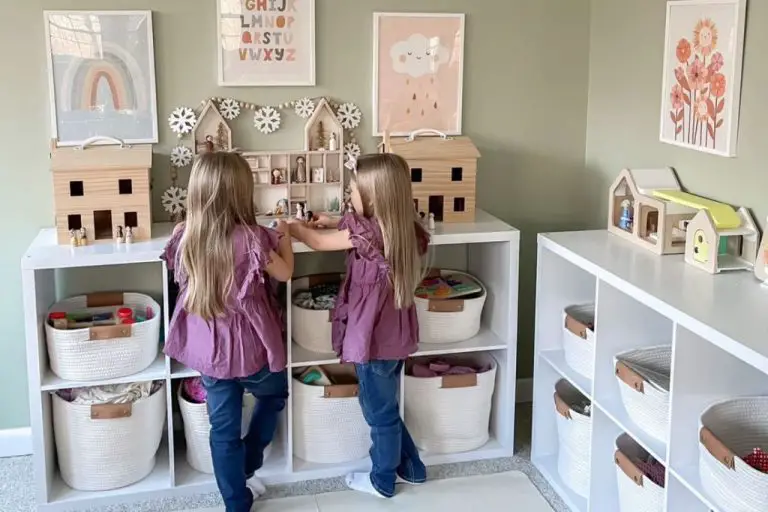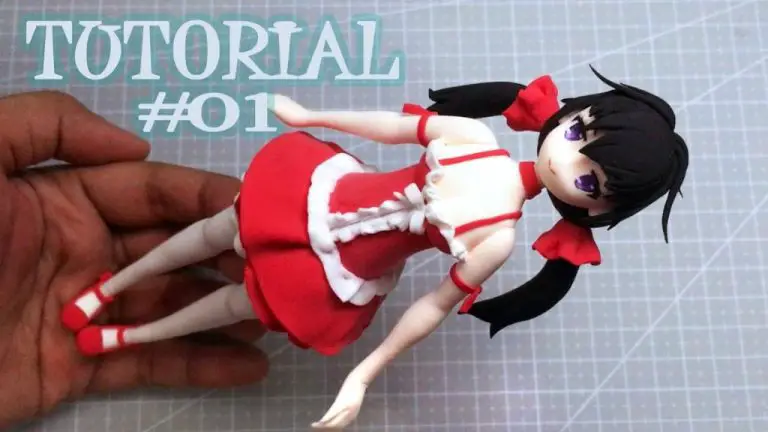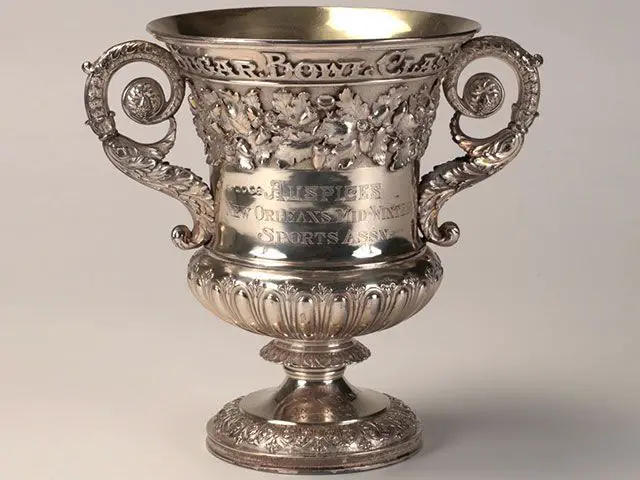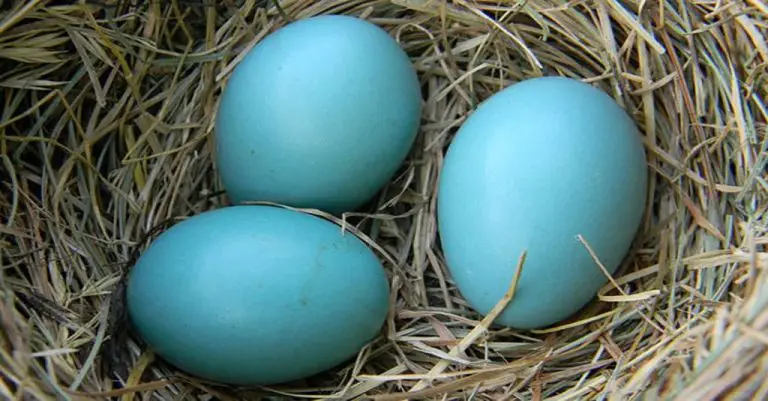How Many Bracelets Can You Make With A Clay Bead Set?
Clay bead sets have become increasingly popular for creating unique and colorful beaded bracelets. These sets contain a variety of clay beads in different shapes, sizes, and colors. With a single set, you can make dozens of one-of-a-kind bracelet designs to match any outfit or occasion.
But how many different bracelet combinations can you make from one clay bead set? While it may seem endless, there are some simple techniques you can use to calculate the number of possible bracelet designs mathematically. This allows you to estimate just how many unique looks you can create before you even start stringing.
In this article, we’ll cover everything you need to know about maximizing your clay bead sets, from understanding what’s included to formulas for calculating possible combinations. You’ll learn bead arrangement tricks, recommended tools, and even tips for photographing your beautiful beaded bracelet creations.
What’s Included in a Clay Bead Set
A typical clay bead set includes 100-150 beads, enough to make 1-2 standard bracelets. Sets come in a wide variety of colors, shapes, and sizes to allow for lots of creative flexibility. The most common clay bead sets include:
- 100-150 round, oblong, square or rectangular 6mm flat beads
- At least 10-20 color varieties like red, blue, green, yellow, orange, purple, black, white
- Specialty shapes like hearts, flowers, dolphins
- Metallic beads in silver, gold, copper
- Variety of finishes – glossy, matte, pearlized, dual-colored
The abundant colors and shapes allow you to make many unique bracelet patterns and designs. With 100-150 beads, you can make 1-2 standard 7 inch bracelets for teens or adults. Read on to learn techniques for maximizing the number of unique bracelet combinations possible with a single clay bead set.
Bead Arrangement Techniques
There are a few different techniques you can use to arrange the beads when designing your clay bead bracelet:
Random Assortment
One easy technique is to simply assort the beads randomly along the elastic cord. This creates an eclectic, bohemian look. You can mix together beads of different sizes, shapes, and colors in no particular order. The randomness itself becomes the design element. This is a great technique for beginners.
According to https://abeautifulmess.com/clay-bead-bracelet-ideas/, “Let chance take the lead by grabbing beads at random to create an eclectic assortment of colors, shapes and sizes.”
Planned Designs
For a more structured look, you can plan out repeating patterns with the beads. For example, you could do groups of 3 beads in the same color/shape, alternating with groups of 2 contrasting beads. Or make stripes with long runs of a single bead type. Get creative with different sequences. This takes more forethought but allows you to create bracelets with very distinctive designs.
Alternating Beads
A simple arranging technique is to alternate between 2 different bead types, one after the other all the way around the bracelet. This creates a clean, consistent look. You can alternate beads in contrasting colors, alternating round beads with square beads, etc. The possibilities are endless for bead combinations!
Formula for Calculating Bracelet Combinations
There is a mathematical formula that can be used to calculate the number of unique bracelet combinations possible with a given clay bead set. This formula takes into account circular permutations, meaning the order of beads matters but rotating the starting position does not produce a new combination.
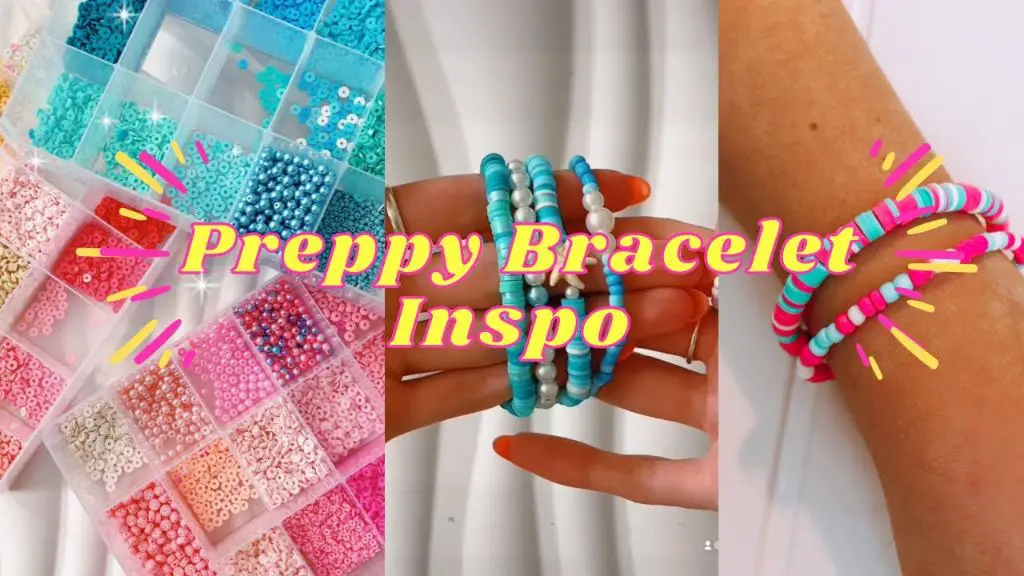
The formula is:
Bracelet combinations = n! / (n – k)!
Where:
- n = Number of beads in the set
- k = Number of distinct beads in the set
To understand this formula, think of the bracelet as a circle that can be rotated. The order of beads matters, so there are n! (n factorial) potential sequences. But rotating the circle doesn’t yield a new combination, so we divide by the number of rotational positions which is n – k.
For example, say you have a bead set with 6 total beads, 4 unique bead types. Applying the formula:
Bracelet combinations = 6! / (6 – 4)! = 720 / 2 = 360
So with this 6 bead, 4 type set there are 360 potential unique bracelet combinations.[1]
Worked Example with Sample Bead Set
To show how to apply the combination formula in practice, let’s walk through a specific example using a sample clay bead set. We’ll imagine our set contains the following beads:
- 5 round red beads
- 3 cubed blue beads
- 4 star-shaped yellow beads
- 2 heart-shaped green beads
In this set, we have 4 different bead types (red, blue, yellow, and green). For the first bead position, we have 4 options to choose from. For the second bead, we again have 4 options. Continuing this pattern gives us 4 x 4 x 4 x 4 = 256 possible unique bracelet combinations just with this single Clay bead set!
Now let’s go through a few examples to see this in action:
- Red, blue, yellow, green
- Green, yellow, blue, red
- Yellow, red, green, blue
Each of those bracelets uses the exact same beads but in different orders, creating unique designs. With just 10 beads across 4 shapes, we were able to calculate 256 different customizable bracelets – and that’s without factoring in variations like alternating bead sizes, patterns, spacers, or charms. Hopefully this example gives you a sense of just how many options are possible with a single clay bead set and some creativity!
Tips for Maximizing Number of Unique Bracelets
One of the best ways to create a wide variety of unique bracelet designs from a single clay bead set is to maximize the use of different bead sizes, shapes, and patterns. Most bead sets include beads in a range of sizes from small accent beads to larger focal beads. Mixing and matching different sizes in each bracelet design automatically makes each one unique.
Using a variety of bead shapes like rounds, squares, rectangles, teardrops, stars, and more will also increase the number of combinations. Simple patterns like stripes and zigzags are easy to recreate using beads of the same shape in different colors.
More complex patterns can be made by planning out bead placements in advance. Sketch your pattern ideas on paper first before stringing beads together. Refer to design diagrams and inspiration from sites like Pinterest and ABeautifulMess.
With thoughtful planning and combining beads of different sizes, shapes, and colors, you can maximize the number of unique bracelets from a single clay bead set.
Recommended Tools
When making clay bead bracelets, there are some basic tools that are very helpful to have on hand. Here are some of the most useful tools for working with polymer clay beads:
A beading loom is essential for stringing and arranging beads into a bracelet. Looms come in different sizes and configurations to support bracelets of various lengths and widths. Popular options are plastic square looms or wooden circular looms with pegs [1].
You’ll need special jewelry pliers like round nose, chain nose, and flat nose pliers for tasks like opening and closing clasps and jump rings. Look for pliers with comfortable rubber grips [2].
Good quality beading thread or string, like nylon coated stainless steel wire or waxed linen thread, will help keep your bracelet intact. Avoid regular sewing thread as it can easily fray or break when worn. Opt for thread marketed specifically for beading or jewelry making.
Finally, clasps like lobster clasps, toggle clasps, or magnetic clasps securely close your bracelet. Make sure to match the size of the clasp to the width of the bracelet.
Inspiring Clay Bead Bracelet Galleries
Clay beads open up an endless world of bracelet designs and creative possibilities. From single stranded to multi-stranded, stretchy to clasped, neutral to colorful – the variations are limitless. One of the best ways to get inspired is by perusing gallery collections showcasing the diversity of finished clay bead bracelets.
Pinterest is a particularly useful source, with boards dedicated to clay bead bracelets. You’ll discover everything from minimalist designs using neutral tones, to vibrant patterns made with a rainbow of colors. There are options ranging from casual daywear, to dressier evening styles. No matter your personal style, you’ll find eye-catching looks to serve as a launching point for your own creations.
Don’t limit yourself to just clay beads either. You can incorporate other elements like gemstones, chains, charms, tassels and more. Mixing materials adds further interest and texture to your finished piece. The key is letting your creativity run free. Use the galleries as a springboard, putting your own spin on colors, patterns and materials.
Above all, remember that handmade clay bead bracelets make wonderfully unique accessories and gifts. Even simple single-strand designs have an artisanal feel that can’t be replicated in mass produced jewelry. Your one-of-a-kind creation will be cherished for years to come.
Tips for Photographing Your Bracelet Designs
Proper lighting, angles, backgrounds, and props are key to capturing beautiful photos of your handmade bracelet designs. Here are some tips:
Lighting: Bright, diffused natural light works best. Position near a large window on an overcast day. If shooting indoors, use a flash diffuser or reflector. Side lighting accentuates texture. Backlighting creates a glow effect.
Angles: Shoot from directly above to highlight the full bracelet design. Lower angles (45-65 degrees) showcase dimension. Side angles emphasize different parts of the design. Take photos at multiple angles for variety.
Backgrounds: Solid colored backdrops (white, black, gray) nicely frame a bracelet. Natural backdrops like wood bring an organic feel. For interest, use textured materials like burlap.
Props: Show scale by photographing bracelets on a wrist or mannequin hand. Complement colors by pairing with flowers, fabrics, or other jewelry. Spark creativity by placing in artistic settings.
For more photography inspiration, check out these bracelet styling galleries: https://www.pinterest.com/chanelgarcia3/bracelet-photoshoot-ideas/
Conclusion
Making your own clay bead bracelets allows for unlimited creativity and customization. With some basic math principles, you can calculate the vast number of unique bracelet combinations possible from a single bead set. Don’t be afraid to experiment with different bead arrangements, patterns, sizes, and colors. The joy is in creating your own special bracelet designs that reflect your personal style.
Summary the key points covered about calculating possible bracelet combinations and maximizing variety. Reinforce the message to embrace creativity, try new techniques, and make bracelets that bring you joy.
The world of polymer clay bead jewelry awaits. With an array of colors and textures to work with, you can create truly one-of-a-kind bracelets. Treasure the pieces you make and wear them with pride, knowing that no one else has jewelry just like yours. Keep challenging yourself to try new skills as you continue your beading journey. Most importantly, remember that how you express yourself through your art matters more than anything.

